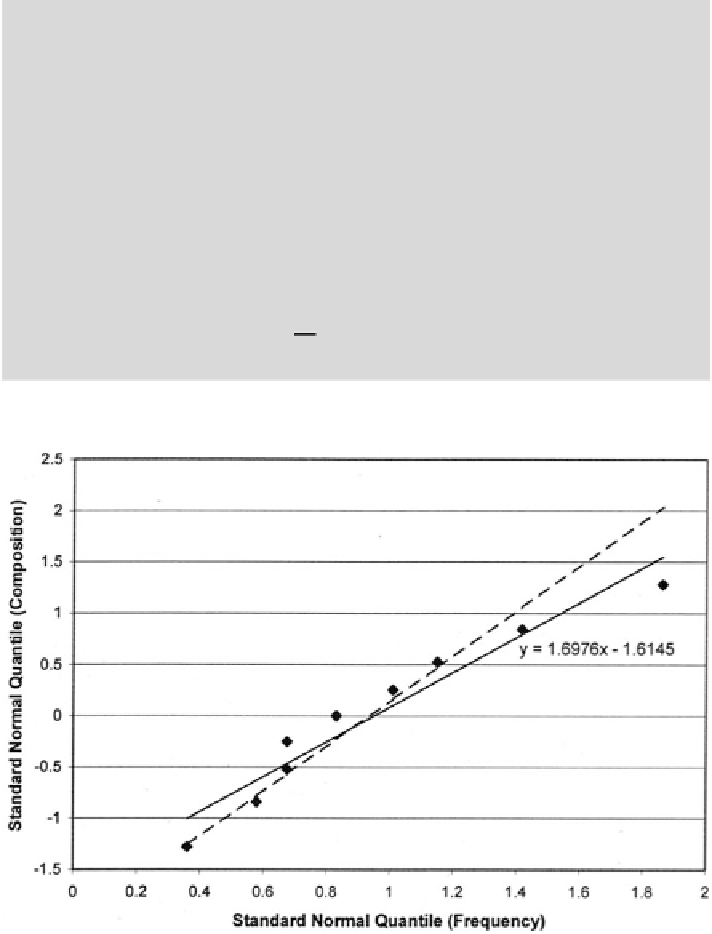Geoscience Reference
In-Depth Information
Box 12.6: Algorithm for Computation of Coefficients
In order
to perform the required calculations
it
is convenient
to
define an auxiliary function
W
j
(
i
,
q
)withasproperties
W
1
i
ðÞ
¼
;
q
0
;
W
0
i
ðÞ
;
q
p
j
q
j
W
i
q
N
j
¼
W
i
q
ðÞ
¼
ðÞ
k
j
i
ðÞ
;
q
ð
j
¼
1, 2,
...
N
Þ
. From the
recurrence
formula for Krawtchouck polynomials, it can be derived that (
j
+1)
W
j
+1
(
i
,
q
)
+[
i
Np
+
j
(
p
q
)]
W
j
(
i
,
q
)+(
N
j
+1)
pqW
j
1
(
i
,
of q
)
¼
0. Consequently,
N
N
the coefficients of
ˈ
1
i
¼
∑
j
¼ 1
c
j
k
j
(
i
,
q
1
)sa isfy
c
j
¼
∑
j
¼1
ˈ
1
i
W
j
(
i
,
q
1
). The
correlation coefficient
ˁ
then can be obtained from the variance
1
c
j
2
2
j
W
(
q
1
) and, finally, the values
2
j
σ
¼
∑
ˁ
ˈ
2
i
corresponding to
ˈ
1
i
become
¼
p
1
p
2
j
ij
X
N
j
¼0
p
1
p
2
i
j
ˈ
2
i
¼
1
ˈ
1
j
.
Fig. 12.52 Content of acidic volcanics in 768 square cells (Abitibi area, Canadian Shield)
measuring 10 km on a side;
Q
-
Q
plot of cell values similar to Fig.
12.46
(Source: Agterberg
2005
, Fig. 2)
For example, it will be attempted to determine the Abitibi acidic volcanics
frequency distribution of the 48 values for 40-km cells shown in Fig.
12.48
from
the frequency distribution of the 768 values for 10-km cells shown in Fig.
12.49
plus an estimate of variance s
2
¼
0.00386 for the 40-km cells. It can be assumed

Search WWH ::

Custom Search